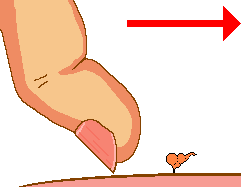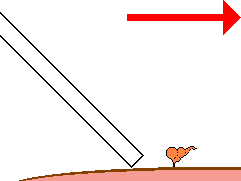Anatomy of the
Honey Bee's Sting
|
|
|---|
|
Anatomy of the Honey Bee's Sting |
Bee Stings
|
|---|
This page contains material and "advice" that I am not qualified to give, therefore I strongly urge viewers to consult authoritative sources, not here. I am leaving it exactly how Dave Cushman wrote it for historical reasons only. Roger Patterson.
There are some individuals that are especially sensitive to bee stings, but this is rare.
Sensitivity among the general public is about one in fifty thousand, but among beekeepers the figure drops considerably... To about one in a hundred.
As little is known about the numbers of beekeepers you will often see in print figures that lie between these limits (depending on the point the text is trying to make).
In addition to the confusion about the frequency of occurrence of sensitivity, many people regard the swelling that sometimes occurs as 'an allergic reaction'. Such swelling is normal unless it is very pronounced or in another part of the body that is not close to the sting site.
Anaphylaxis & Anaphylactic Shock can be associated with bee stings, but the incidence is incredibly rare. The linked page gives more detailed information.
Arthritis... Some people claim relief from the pain of arthritis if they sustain several bee stings.
Some beekeepers are reporting bad reactions to bee stings when they have taken pain killers or anti-inflammatory drugs.
The drugs may reverse their immunity to bee stings. Such drugs include:-
IBUPROFEN, FENOPROFEN, NAPROXEN, KETOPROFEN, SULINDAC, PIROXICAM, SUPROFED AND TOLMETIN.
It has been recently reported that people who considered that they had an immunity to bee stings... Suffered much increased reactions to bee and wasp stings after taking a non steroidal anti-inflammatory drug. Beekeepers are advised to stay away from ADVID and TYLENOL and over the counter pain killers in general. If any pain relief is required... Then take only ASPIRIN.
Desensitisation is a possibility and advice should be sought from your own doctor.
| Removing a Sting... After a honeybee stings a human, the sting is left in situ complete with the venom gland. Use a scraping action to remove it... A fingernail is ideal and always readily available, the diagram at right shows the procedure. Speed of removal is important and it is now accepted the method of removal, whether scraped or pinched, doesn't matter as the same amount of venom is injected whichever method is used. |

|
|---|

| I am told that a credit card also makes a useful tool for this purpose, I have not tried this myself, but speed of removal is more important than the method of removal, as the venom gland continues pulsing after it is detached from the bee and thus continues to pump venom into the wound. |
|---|
In some cases a small pimple forms on the sting site...
A few years ago I had such a pimple on one of my sting sites and I squeezed the puss on to a microscope slide and had a look... There was a small segment of sting about 0.25 mm x 0.125 mm contained in the puss. I only performed this test on one occasion, but since then I have always assumed that the pimple was due to the lymphocytes and phagocytes chewing up the debris of a sting fragment.
I am told by a friend of mine that the same happens with cactus spines, where a small fragment will break off, stay in the puncture and fester until it is either ejected or consumed. Until then, a small pimple will remain at the site.
Some beekeepers keep a pot of 'Aloe Vera' on their windowsill... To use it... Break a small piece of fleshy leaf off and apply the moist end directly to the site of the sting.
Dave Cushman.
Page created Winter 2001
Page updated 25/11/2022